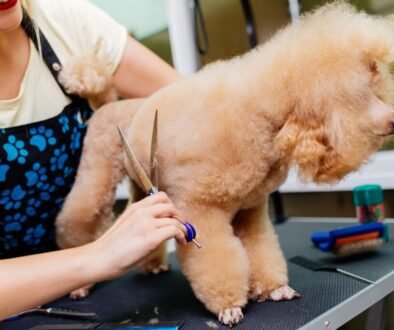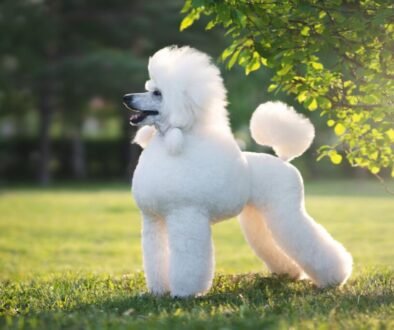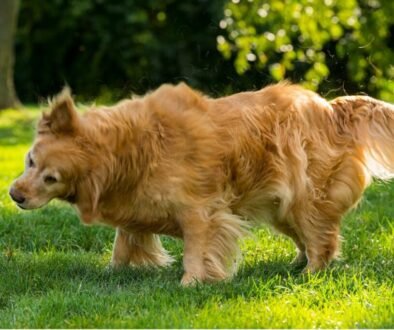Do Poodles Have Dew Claws? Everything You Need to Know!
What Are Dew Claws Anyway?
Have you ever noticed that extra little toe-like thing higher up on your dog’s leg and wondered what it’s doing there? That’s a dew claw! But why is it there, and do all dogs have them? If you’re a proud poodle parent or thinking about getting one, you might be curious if your fluffy, intelligent friend has dew claws—and if they do, what you should do about them.
In this blog, we’ll dive into everything you need to know about poodles and their dew claws. We’ll clear up common misconceptions, discuss the purpose of these quirky appendages, and help you decide whether or not they should be removed. Let’s get started!
Do Poodles Really Have Dew Claws?
The short answer: Yes, poodles do have dew claws—but there’s a little more to it than that.
Most poodles are born with dew claws on their front legs. These are the small, thumb-like claws located slightly higher up the leg, away from the paw. Some poodles may even have dew claws on their hind legs, though this is far less common.
Interestingly, whether or not your poodle has dew claws on their back legs can depend on their lineage and genetics. Standard poodles are more likely to have back dew claws compared to miniature or toy poodles, but even in standards, it’s pretty rare.
The Purpose of Dew Claws
So why do dogs have these little extra claws in the first place? Are they just a leftover from evolution, or do they actually serve a purpose?
Dew claws can actually be quite useful for dogs:
- Grip and Stability: When running at high speeds or making sharp turns, dew claws help dogs maintain traction and balance.
- Climbing and Holding: Dogs sometimes use their dew claws like thumbs to grip toys, bones, or even when climbing.
- Grooming: Dew claws help dogs scratch and clean hard-to-reach areas.
While dew claws aren’t as critical as the other four toes, they’re not entirely useless either. In active dogs like poodles, they can play a surprisingly important role.
Should You Remove Your Poodle’s Dew Claws?
This is one of the most controversial questions when it comes to dew claws.
Some breeders and veterinarians choose to remove dew claws when puppies are just a few days old, while others argue that there’s no need unless there’s a medical issue.
Reasons to remove dew claws:
- Injury Prevention: Dew claws can snag on carpets, furniture, or while running, leading to painful tears.
- Infection Risk: If a dew claw breaks or gets damaged, it can become infected.
- Show Standards: In some dog shows, certain breeds are expected to have dew claws removed.
Reasons to keep dew claws:
- Natural Anatomy: Dew claws are a part of your dog’s natural body structure.
- Potential Benefits: As we mentioned earlier, they help with grip, stability, and grooming.
- Low Risk: With proper care, dew claws rarely cause issues.
Our advice: Talk to your vet. If your poodle’s dew claws aren’t causing any problems, there’s usually no need to remove them.
How to Care for Poodle Dew Claws

Taking care of your poodle’s dew claws is pretty simple—and it can prevent most problems associated with them.
- Regular Trimming: Dew claws don’t wear down naturally like other nails, so they need to be trimmed regularly.
- Check for Injury: Look for signs of redness, swelling, or discomfort.
- Keep Them Clean: After outdoor adventures, check the dew claws for dirt or debris.
A good grooming routine can keep your poodle’s dew claws healthy and pain-free.
Potential Problems with Dew Claws
Though they’re usually harmless, dew claws can sometimes cause issues.
- Overgrowth: Because they don’t touch the ground, dew claws can grow too long and curl back into the skin.
- Snagging and Tearing: Active poodles can catch their dew claws on rough surfaces.
- Infection: Broken or torn dew claws can easily get infected if not treated.
Tip: If you notice your poodle limping, licking their paw excessively, or showing signs of pain near the dew claw, visit your vet.
Interesting Facts About Dew Claws
- Not all dogs have hind dew claws, but breeds like the Great Pyrenees often have double dew claws on their back legs.
- Wolves and wild canines also have front dew claws—they’re not just a domestic dog thing!
- In some cases, dew claws are fully attached with bone and muscle, while others are loose and floppy.
Conclusion: What You Should Do Next
So, do poodles have dew claws? Yes—and they’re usually nothing to worry about! Whether or not you choose to remove them, the most important thing is to keep them clean, trimmed, and healthy.
If you’re ever in doubt, your veterinarian can help you decide what’s best for your furry friend. And remember: those quirky little claws might just be more useful than they seem!
Frequently Asked Questions
Q: Do all poodles have dew claws?
A: Most poodles have dew claws on their front legs, but not all have them on their back legs.
Q: Should I remove my poodle’s dew claws?
A: Unless they’re causing problems, there’s usually no need to remove them. Talk to your vet if you’re unsure.
Q: How often should I trim my poodle’s dew claws?
A: Every 3–4 weeks is a good rule of thumb, but check them regularly to avoid overgrowth.
Q: Can dew claws grow back after being removed?
A: If not completely removed, regrowth can happen—but it’s rare.
Got any more questions? Leave them in the comments below!



